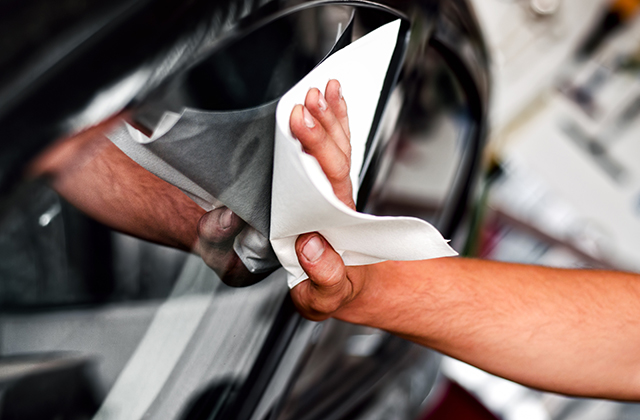Keeping your car looking fresh and shiny isn’t just about making a statement; it’s also about protecting one of your significant investments. However, there are several myths surrounding car waxing, especially when it comes to doing it yourself and its environmental impact. Today, we’ll break down these misconceptions and shed light on eco-friendly practices for car enthusiasts, DIYers, and everyone keen on blending car care with environmental responsibility.
Introduction
Car waxing often feels like a chore, but it’s a crucial step in maintaining your vehicle’s health. Waxing not only enhances your car’s aesthetic appeal but also provides a protective layer against the elements. Yet, misinformation and myths abound, particularly concerning DIY waxing and its environmental footprint. In this post, we will debunk five common myths about DIY car wax, offering you a clearer, greener path to car care.
The Myths
Myth 1: Waxing is Harmful to the Environment
Many people believe that car waxes, especially those applied during DIY sessions, are laden with toxic chemicals that harm the environment. This myth has made many eco-conscious drivers hesitant to wax their cars at all.
Myth 2: Professional Waxing is Always Better Than DIY
There’s a prevailing notion that professional car waxing is vastly superior to DIY approaches. The belief is that professionals use better products and techniques, making their services worth the extra cost.
Myth 3: All Waxes Are the Same
Another widespread myth is that all car waxes offer the same benefits and contain the same ingredients. This misconception can lead to uninformed choices that may not serve your car or the environment well.
Myth 4: Waxing is Only for Cosmetic Purposes
Some car owners think that waxing is purely for aesthetic reasons. The idea is that a shiny car looks good but doesn’t offer any real protection or functional benefits.
Myth 5: You Don’t Need to Wax a New Car
New car owners often assume their vehicle doesn’t need waxing because it’s fresh off the lot. This myth suggests that factory finishes are sufficient protection against the elements.
Debunking the Myths
Waxing is Harmful to the Environment
While some traditional waxes do contain harmful chemicals, eco-friendly options are available that are both effective and environmentally friendly. Modern formulations often use natural ingredients like carnauba wax, beeswax, and plant-based polymers. According to a study by the Environmental Working Group, these ingredients are biodegradable and less harmful to water systems. Brands like Eco Touch and Mothers offer products that are specifically designed to minimize environmental impact without sacrificing performance.
Professional Waxing is Always Better Than DIY
Professional services can be top-notch, but they aren’t always necessary for achieving a great finish. DIY waxing allows you to control the products you use, ensuring they meet your eco-friendly criteria. With the right tools and techniques, you can achieve results comparable to professional services. Additionally, DIY waxing can be more cost-effective and convenient, saving you trips to the auto shop and reducing your carbon footprint.
All Waxes Are the Same
Waxes vary significantly in terms of ingredients, performance, and environmental impact. Synthetic waxes often provide longer-lasting protection but can contain harsh chemicals. On the other hand, natural waxes, like those made from carnauba, offer a greener alternative and still deliver excellent results. Understanding these differences can help you make informed choices that benefit both your car and the environment.
Waxing is Only for Cosmetic Purposes
Waxing does more than make your car look good. It creates a protective barrier that shields your vehicle from UV rays, dirt, and moisture. This barrier can prevent paint oxidation and corrosion, extending the life of your car’s exterior. The added layer of protection also makes it easier to clean your car, reducing the need for frequent washes and further conserving water and cleaning products.
You Don’t Need to Wax a New Car
Even new cars benefit from regular waxing. A factory finish is not impenetrable and can degrade over time due to exposure to the elements. Applying a high-quality wax can preserve the factory paint job, maintain the car’s aesthetic appeal, and add an extra layer of protection. This is especially important in harsh climates where your car is exposed to extreme sun, rain, or snow.
Benefits of Eco-Friendly DIY Waxing
Choosing eco-friendly waxes for your DIY projects has several advantages. Not only do you reduce your environmental footprint, but you also protect your car with products that are less likely to cause harm. Eco-friendly waxes are often made from renewable resources, making them a sustainable choice. They are biodegradable, reducing the risk of water pollution. Furthermore, these products are generally safer for your skin and respiratory system, making the waxing process more pleasant and less hazardous.
How-To Guide for Eco-Friendly DIY Waxing
Step 1: Gather Your Supplies
Look for eco-friendly wax products that are free from harmful chemicals. Choose reusable applicators and microfiber towels to reduce waste.
Step 2: Wash Your Car Thoroughly
Before applying wax, make sure your car is clean. Use biodegradable car wash soaps to minimize environmental impact. Rinse with water efficiently to conserve resources.
Step 3: Apply the Wax
Follow the instructions on your chosen wax product. Apply a thin, even layer using a reusable applicator. Allow the wax to dry to a haze.
Step 4: Buff the Surface
Use a clean microfiber towel to buff the waxed surface in circular motions. This will bring out the shine and ensure even coverage.
Step 5: Regular Maintenance
To maintain the protective layer, wax your car every three months. Regular washing with eco-friendly products will also help preserve the wax coating.
Conclusion
In summary, waxing your car is a vital part of vehicle maintenance that offers both aesthetic and protective benefits. By debunking common myths and opting for eco-friendly products, you can keep your car looking great while being kind to the planet. Remember, achieving an eco-friendly shine for your vehicle is easier than you think. Share your experiences and tips with us; together, we can drive a greener future.


